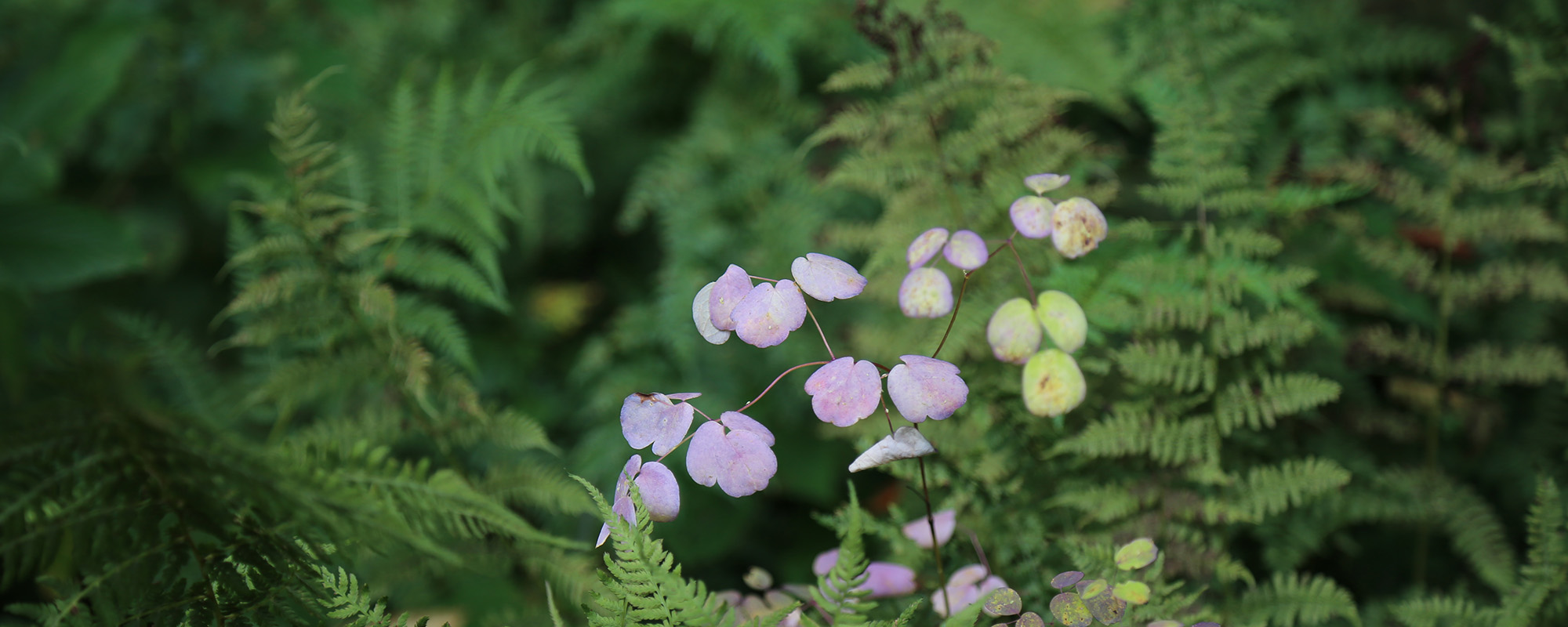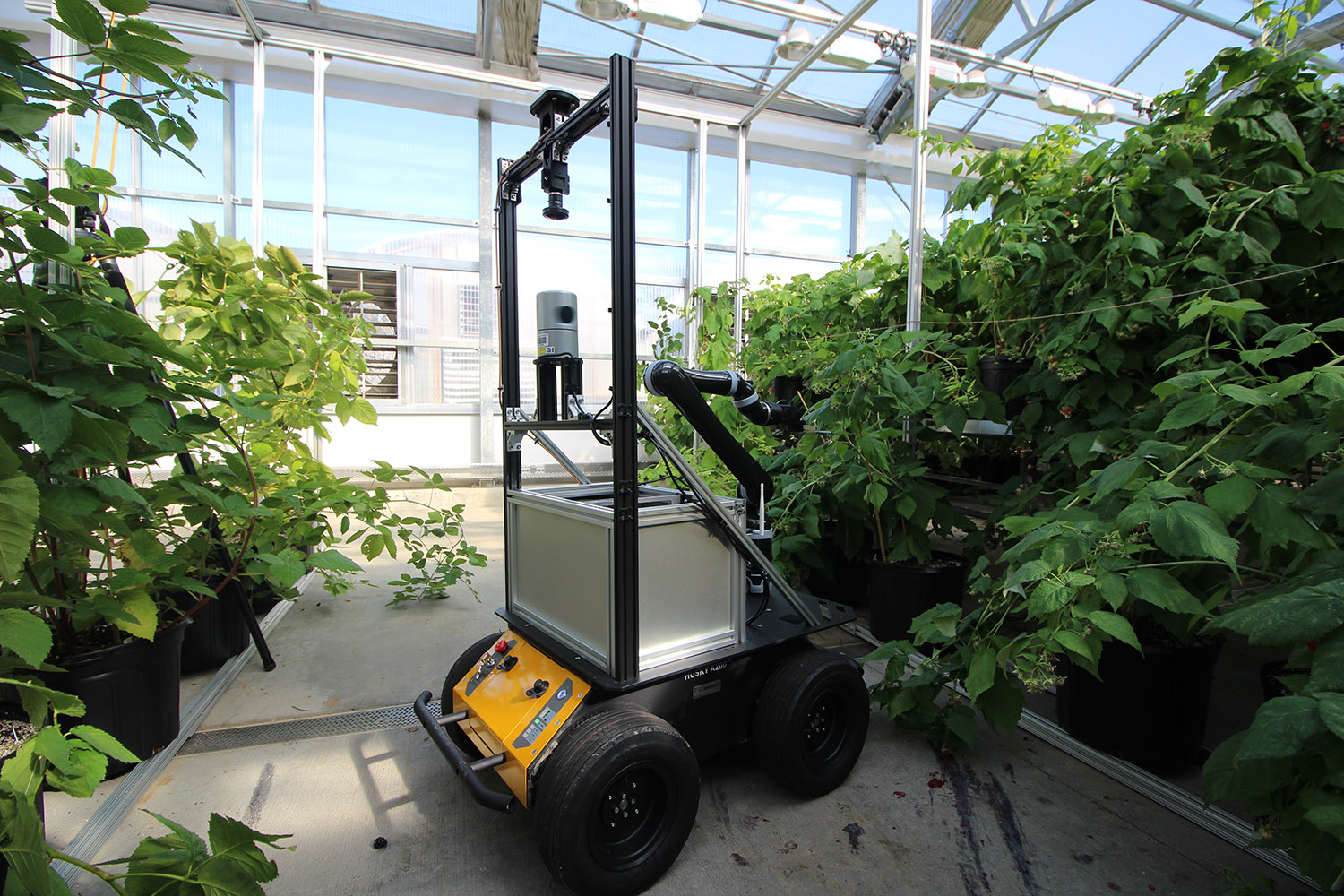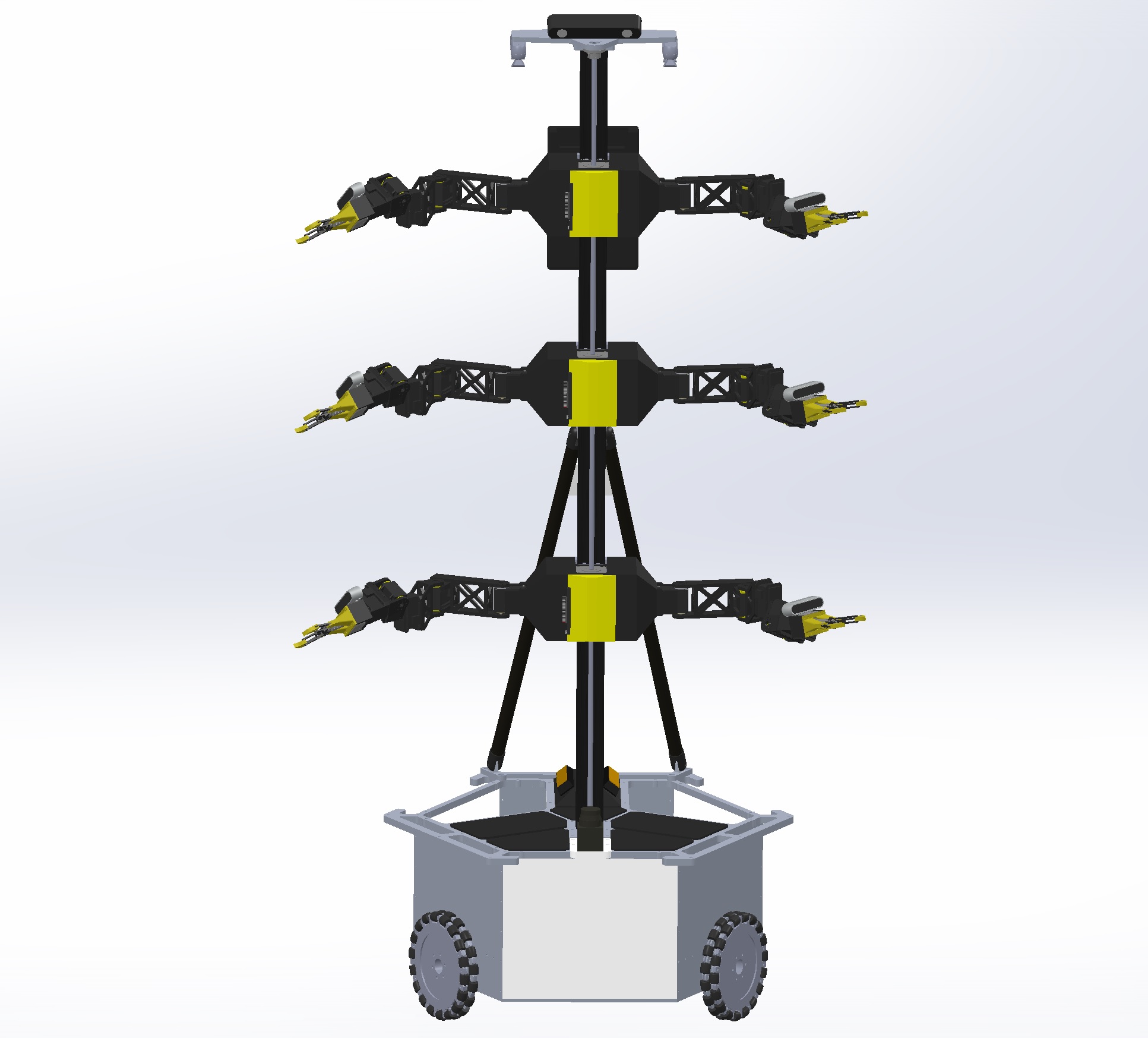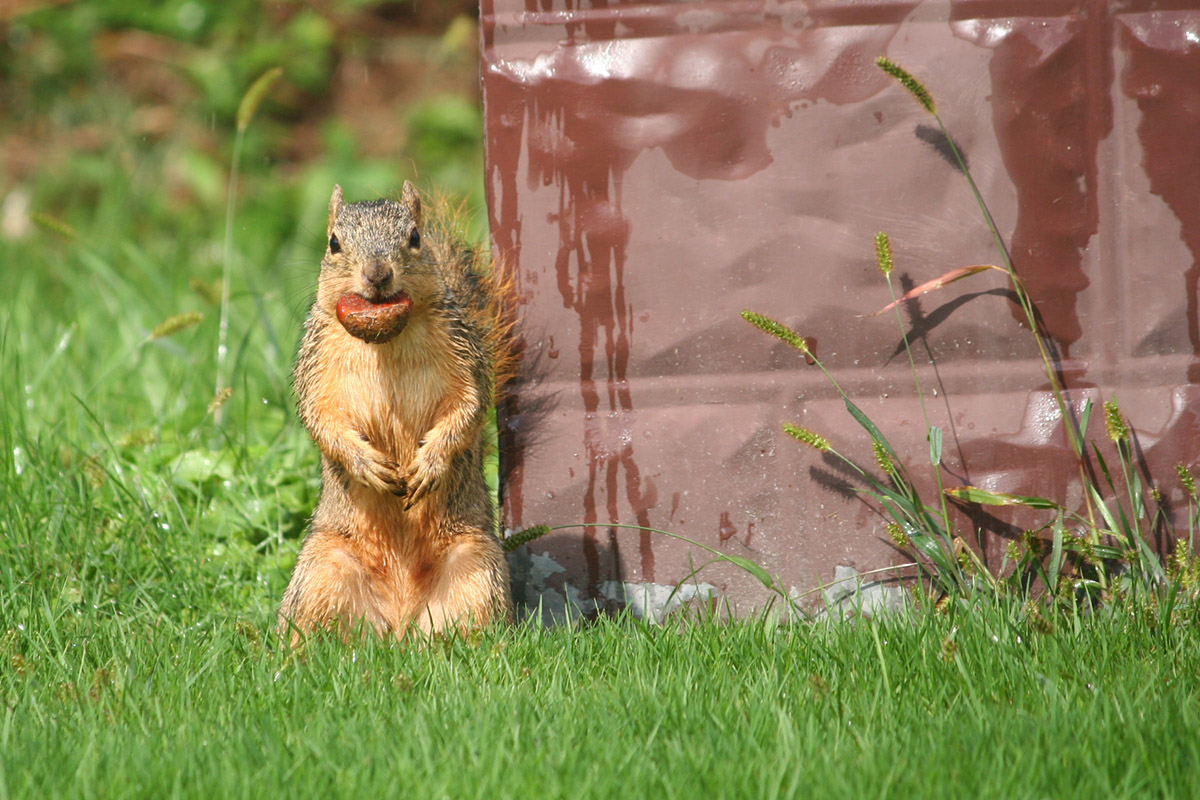“…there are known unknowns; that is to say we know there are some things we do not know. But there are also unknown unknowns—the ones we don’t know we don’t know.” – Donald Rumsfeld.
If you work with robots, you know that there are lots of unknowns. Most roboticists, including me, make a living on solving known unknown problems. However, the robots would still get stuck from time to time. It actually doesn’t take much to surprise a robot. The trouble is, it’s hard to say what are the unknown unknowns, and it’s even hard to give examples. By definition, if we can describe it, it’s not an unknown unknown… Helping robots to deal with surprises is what I like/want/hope to do (can’t depend on it for funding though). I need to find examples to tell people what I am working on…
Here is a personal travel story from over a year ago. My wife and I were taking the kids to China to see grandparents. There were many unexpected things happened along the way. I will let you be the judge on what were the known unknowns and what were the unknown unknowns.
Day One, Dec 24, 2019, Christmas Eve, Morgantown, Pittsburgh, Houston
This was the day to fly to China. The flight was scheduled to leave at 4:24pm. We left home at 12:59 and the weather was perfect; sunny, 50 plus degrees, with very little wind. As we drove past Washington PA, the air became foggy. It was almost like a dust storm coming at us; but it was fog. An alert appeared on the phone, said our flight to Houston (connecting to Beijing) was canceled. We called United Airlines (famous for dragging an old man off plane) while still driving towards the airport. The first lady (not the First Lady) from United was not very helpful, and it was a little difficult to understand her sometimes. She said the reason for cancellation was due to “severe weather conditions”, which sounded bogus to us at the time. She was not able to find any alternative solution (e.g., all other flights were full) and offered to refund the tickets. I told her that was not an option we would consider and asked to speak to her manager. The manager lady had many more options. She offered to check other airlines for solutions and suggested we could go through other cities such as Singapore or Hong Kong. That sounded a bit more exciting. We pulled over at the airport entrance waiting on her to find something for us. Unfortunately, the phone cut off after about 35 minutes into the call and we didn’t have a way to reach the manager lady again…
We went ahead and parked at the short-term lot and went to the United counter. The screen was now showing several canceled flights, including two flights to Houston. While waited in the long line I dialed the United number again, in hope to connect back to the manager lady. This time it was a guy, who was quite helpful. I also gave him my number just in case. He helped us to find a flight to Houston at 9pm, which would give us just about 1-hour layover time in Houston. Sounded like a feasible option, and the best chance we had; I took the suggestion. The kids and I went to move the car from short-term to extended parking. I found out for the first time that you can drive to extended from short-term without having to pay for the latter… Looks like a loophole in the system. The fog was getting denser by then and the visibility was ~ 100m. It became clear that the weather poses a risk to flights. The road ahead of us would be full of unknowns.
Passing through the airport security was uneventful. We had dinner and started to wait at the gate. Many more flights were canceled. The fog outside looked very dense. Our airplane was supposed to come from San Francisco, but it had to land in Chicago first to wait for an opportunity to come over to Pittsburgh. The plane kept getting delayed (e.g., the phone showed that it taxied for 30-40 minutes in Chicago) and the passengers waited at the gate became more and more worried. There were about 15 Chinese, hoping to get on the same Houston flight to Beijing. As the window of opportunity getting narrower, people started to discuss the distance between C11 and D12 gates in Houston, how fast can they run, who can run the fastest, would the airplane wait for so many passengers, etc. I went to talk to the lady at the counter, she searched around and offered me a Plan B: if we missed the flight in Houston, we would then be automatically put on the next flight to San Francisco, and connect there to Beijing. I never knew they could do that (i.e., a prebooked contingency plan) and happily accepted the offer. Of course, there was another flight to San Francisco from Pittsburgh at 9pm (after many hours of delay as well) that we could get on, but I wanted to try our luck in Houston first.
The plane for the San Francisco flight came from Houston (sounds confusing, right?) and it was supposed to land at 8:22, and it did. People cheered. The United staff were also happy, known that a plane could safely land in that kind of condition. I got a brief moment to chat with the Pilots for the San Francisco flight. Apparently, to fly in that kind of weather required airplanes with special equipment and training of the pilots. They had to use autopilot during landing as there was almost no visibility for the pilot to do anything meaningful. Taking off was not so much an issue.
Our plane (from Chicago) was not so lucky. It was first predicted to land at 8:23pm but kept getting delayed. Eventually it landed at 8:56 and the scheduled take off time got delayed from 9:00 to 9:46. This would leave about 19 minutes in Houston to catch the Beijing flight. The Chinese passengers got into more vivid discussions of the possible options, but there was still a slim slice of hope. A plan was formulated: everyone needed to call Air China to hold their plane on the ground a little longer, everyone needed to tell the flight attendant to let people under time pressure to exit the plane first, the first (fastest) person who gets to the gate could tell the airline to keep the door open a little longer, among others…
Boarding was relatively fast. People patiently waited for the door to close. After the lights flashed a few times, the pilot announced that there was a maintenance related issue. A smoke alarm needed to be reset but can not be done through software. Someone had to physically get down under the plane to check it out. Some passengers started to get impatient. The procedure took 20-30 minutes, wear out the remaining hope of catching the flight in Houston. Finally, the airplane started moving, but instead of headed for the runway, it was asked to go through a de-icing procedure. That helped to seal the deal. By this time, nobody would have believed to be able to get to Houston on time. It actually felt more relaxing this way. We wouldn’t need to run, and we had a backup plan in the pocket…
It was about 12:30am when we landed in Houston. The flight to China had long gone (12:04 am). We started to line up at the counter. The lady at United was already prepared (!). She had our boarding pass to San Francisco waited for us. For the boarding pass from San Francisco to Beijing, it was a different story. She could only print one (my son, Anderson’s) and we would need to get the remaining tickets at the gate, in San Francisco.
Day Two, Dec 25, Christmas Day, Houston, San Francisco
We had about 4 hours to spend in the San Francisco airport, but the first thing we wanted to do was to get our boarding passes. First, we went to the gate where another flight to China was boarding. However, the people there told us that they worked for United and only people from Air China could help us with the tickets. With nobody from Air China we can find in the airport, I called their number. The guy on the phone was 1. not very patient, 2. claimed this must be addressed by United since they reserved the tickets; and 3. offered to refund the tickets… He also told me that our names were in the system but there was no guarantee that we would be allowed to board the plane. We had to walk to another terminal to find the United office. The lady there suggested us to exit the airport security to talk directly to Air China at ticketing to get the boarding pass (the reason been that we were required to show them the passports, and only the Air China people could issue the tickets). So, we did that. The people at the Air China were neither patient nor helpful. They told us that 1. the plane was full and there was no room for more people (in the meantime, the lady on the phone in the background just offered tickets to four “important visitors” for the same flight…); 2. the United people did not do their job right and give us the seats; and 3. it can only be addressed by United. While listening, I was planning vacation plans in San Francisco in case we could not make to China. We were suggested a “black uncle” at the United counter as someone maybe willing to help. So we were at the United line and talking to the “black uncle” a few minutes later. Without much trouble, the nice guy replaced our tickets and told us that the Air China people would be waiting for us. We had to wait in the long Air China line, again, but finally we got our boarding passes. BTW, through this process, I learned that airline tickets and boarding passes are two different things… I also asked the lady at the counter to double check our checked baggage and she confirmed. Soon, we were on a Boeing 747 to Beijing.
Day Three, Dec 26, Beijing
This was a short day with only about 15-20 hours, and most of them were in the air. We were chasing the sun the whole time. At first the sun was faster, and finally set behind the horizon. As we got closer to the North pole, the airplane was able to gain some ground.
The kids were surprised that we had to go through the Custom (they were a little tired). The line was not too long, and the process was smooth. Finding our luggage was not so easy though. There were just a few bags left and none of them was ours. Once again, we were at the customer service and they couldn’t locate the bags in the computer system. A big problem was that all our heavy winter Jackets were in the checked bags and it’s freezing outside. Another problem was that we would be heading to Baotou (a very cold city in northern China) in a day so it was not clear where should the bags be delivered. The nice lady there gave each of us a red blanket, so we wouldn’t be too cold waiting for the Taxi outside. That made the four of us looked like Tibetan monks in the Beijing Streets.
Day Four-Seventeen, Dec 27-Jan 09, 2020, Beijing, Baotou
Many interesting things happened but I am going to skip this part.
About the bags, they were able to find them in Houston and delivered them to Baotou directly. Before that, we borrowed clothes from relatives. We then had to drag four large bags back from Baotou to Beijing on the train.
On Jan 7, there were a few seconds on the TV news about a new virus found in Wuhan that made some people sick.
Day Eighteen, Jan 10, Beijing
It was the time to think about going home. I checked the tickets online and only Anderson’s was shown. I was not surprised. I picked up the phone to call Air China and was told to “talk to United”. Talked to the United and was assured “everything is solved, just not showing up on the website.”
Day Nineteen, Jan 11, Beijing, Washington DC, Pittsburgh, Morgantown
It was going to be a long day with over 30 hours. We arrived at the Beijing airport in the morning. Still no tickets can be found in the system… Expected to pick a fight, I walked to the Air China custom service. A nice lady there was happy to help. She even walked out her station to help us to get the bags checked…
We got to DC no trouble, then we jumped on a wrong airport shuttle bus. It was until everyone else got their bags for us to find out that our bags were at a different part of the terminal… That wasted a few hours but we did barely made to the flight to Pittsburgh that night.
After Came Back Home
A day after we came back, my wife had to fly to Dallas to help her sister with the birth of twin babies (a known unknown). No one was thinking much about the coronavirus in the US for the first week. People heard about it in the news, but that seemed to be a distant thing in China. At the end of the second week, people (mostly Asians) started to be cautious. Things went progressively (exponentially) bad after that…
Some Random Thoughts
Unlike robots, we rarely get totally stuck in normal lives, probably because we have accumulated a lot of different experiences growing up. But that doesn’t mean we can’t get stuck. Sometimes it just takes a couple steps out of our normal routines to find such examples.
Some examples of us getting stuck are probably taking a math exam or trying to solve problems (e.g., when doing research). I also feel that we sometime get stuck when facing a system built on procedures (you cannot move to step B if step A was not completed). Is this a problem of our decision-making process or how the system was designed?
Some profound events that would have a huge impact on our life are happening somewhere (far away, close to us, or in plain sight) when we are busy worrying about other things…

















